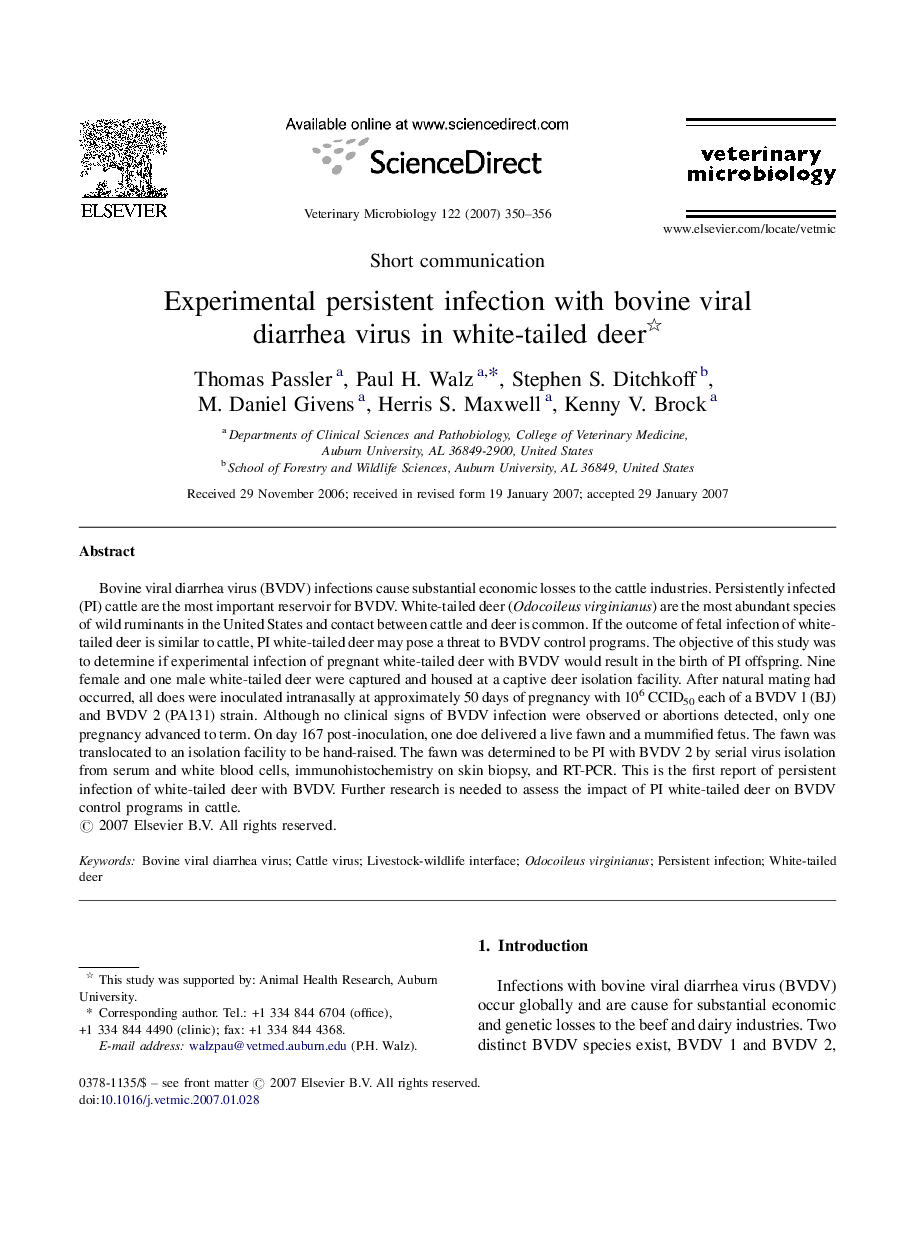| Article ID | Journal | Published Year | Pages | File Type |
|---|---|---|---|---|
| 2468948 | Veterinary Microbiology | 2007 | 7 Pages |
Bovine viral diarrhea virus (BVDV) infections cause substantial economic losses to the cattle industries. Persistently infected (PI) cattle are the most important reservoir for BVDV. White-tailed deer (Odocoileus virginianus) are the most abundant species of wild ruminants in the United States and contact between cattle and deer is common. If the outcome of fetal infection of white-tailed deer is similar to cattle, PI white-tailed deer may pose a threat to BVDV control programs. The objective of this study was to determine if experimental infection of pregnant white-tailed deer with BVDV would result in the birth of PI offspring. Nine female and one male white-tailed deer were captured and housed at a captive deer isolation facility. After natural mating had occurred, all does were inoculated intranasally at approximately 50 days of pregnancy with 106 CCID50 each of a BVDV 1 (BJ) and BVDV 2 (PA131) strain. Although no clinical signs of BVDV infection were observed or abortions detected, only one pregnancy advanced to term. On day 167 post-inoculation, one doe delivered a live fawn and a mummified fetus. The fawn was translocated to an isolation facility to be hand-raised. The fawn was determined to be PI with BVDV 2 by serial virus isolation from serum and white blood cells, immunohistochemistry on skin biopsy, and RT-PCR. This is the first report of persistent infection of white-tailed deer with BVDV. Further research is needed to assess the impact of PI white-tailed deer on BVDV control programs in cattle.
